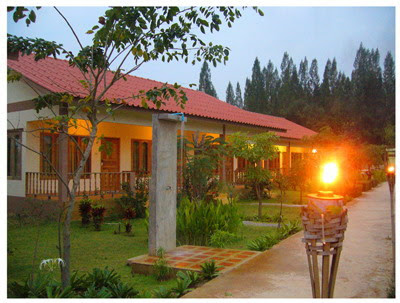
Prisma withdrawal-Holistic rehab in Thailand
Prisma withdrawal
“Turning the impossible into possible”

"Detox from Drugs at a Luxury Holistic Center in Thailand and Israel"

Prisma withdrawal-Holistic rehab in Thailand
The psychiatric pill Prism, also known as fluoxetine, is a drug from the selective serotonin reuptake inhibitor (SSRI) family, intended to treat depression, anxiety disorders, and other disorders. Here is some historical background on the drug:
"Holistic Center for Trauma, Addiction, and Mental Imbalance Treatment in Thailand"
“Come to the beginning of your journey to freedom from addiction to alcohol, drugs, and pills, and rediscover your life within the serene embrace of DaoTherapy Rehab in Thailand—where holistic healing meets empowering recovery.”
DaoTherapy Holistic Rehab
Key Elements of Drugs Detox:
Medical Supervision: Drugs detox must be conducted under medical supervision, as the body may experience withdrawal symptoms. These can include nausea, anxiety, muscle aches, and insomnia. A medical team will monitor and manage these symptoms to ensure the patient’s safety and comfort.
Holistic Therapies:
Holistic Therapies: Many detox programs incorporate holistic therapies such as mindfulness, yoga, and meditation to help individuals cope with stress and anxiety during the detox process. These therapies support the mind-body connection and contribute to overall recovery.
Tapering Process
Tapering Process: Drugs detox often involves a gradual tapering of the drug to reduce withdrawal severity. Doctors will slowly decrease the dosage over time to allow the body to adjust to lower levels of the substance.
Psychological Support:
Psychological Support: Like any addiction recovery process, detox from Drugs includes psychological support. This can involve counseling, therapy, or support groups to address the mental and emotional aspects of addiction.
Post-Detox Treatment:
Post-Detox Treatment: After completing detox, continuing treatment is crucial to prevent relapse. This often includes participation in ongoing therapy, group support, and the development of new coping strategies to maintain sobriety.
Prisma withdrawal: What you need to know about Prisma withdrawal, what are the causes of addiction to prescription pills:
The causes of addiction to prescription pills are complex and vary from person to person, and include a combination of genetic, psychological, environmental, biological, and personal factors.
Genetic factors:
Genetic predisposition: Some people are born with a genetic predisposition to addiction. Studies show that there is a genetic inheritance that increases the risk of addiction.
Families with a history of addiction: Those who have parents or first-degree relatives who have struggled with prescription pill addiction may be at higher risk of addiction.
Mercital withdrawal: Psychological factors:
Mental disorders: People who suffer from depression, anxiety, personality disorders, or post-traumatic stress disorder (PTSD) may turn to drugs to cope with the symptoms of these conditions.
Low self-esteem: A sense of low self-esteem can lead to drug use as a way to escape a painful reality or to improve their sense of self-worth.
Stress and Mental Overload: People who experience chronic stress or increased mental overload may use drugs to relieve stress.
Feelings of inferiority and dysfunction are another psychological factor that can contribute to prescription drug addiction. We will detail this in the context of psychological factors for addiction:

contact us
Contact us with your questions
We would love to speak with you! Feel free to reach out with any questions.

get in touch
Schedule a free consultation
Schedule a free consultation with our team and let’s make things happen!
Development and early history of the prism
1. Development: Fluoxetine was first developed by the pharmaceutical company Eli Lilly and Company in the 1970s. The goal of development was to find a drug that could treat depression with fewer side effects than existing drugs.
2. FDA approval: In 1987, the drug received approval from the US Food and Drug Administration (FDA) for use in the treatment of depression. It was the first drug from the SSRI group to receive approval, creating a significant breakthrough in the field of psychiatry.
Medical uses and spread
1. Treatment of depression: Fluoxetine was initially used to treat clinical depression. Its positive effect on patients led to it becoming one of the most commonly prescribed drugs in the field.
2. Other disorders: Over time, the use of fluoxetine was expanded to treat generalized anxiety disorder, panic disorder, obsessive-compulsive disorder (OCD), and eating disorders such as bulimia nervosa.
3. Side effects: Like any medication, fluoxetine has side effects, including symptoms such as nausea, headache, insomnia, and changes in appetite. In rare cases, more serious symptoms such as suicidal thoughts can occur, especially at the beginning of treatment or when changing the dose.
Impact on the field of psychiatry
1. Popularity: The success of fluoxetine led to the development of other drugs from the SSRI group, which have become a central tool in the treatment of various mental disorders.
2. Clinical studies: Over the years, many clinical studies have been conducted to examine the efficacy and safety of fluoxetine, which have supported its use as a safe and effective drug for the treatment of a wide range of mental disorders.
Summary
Fluoxetine, or Prism, is a central and important drug in the field of psychiatry, which has led to significant improvements in the treatment of many mental disorders. Its development, approval by the FDA, and widespread use have made it one of the most well-known and common medications in the world of psychiatric treatment.
Taotherapy does not recommend long-term drug treatment and strongly believes in self-work, personal improvement, and connection to the community.
Information about the prism and its mechanism of action
Prisma Addiction
The pill Prisma (fluoxetine) from the SSRI group is not considered an addictive drug in the classic sense of the term, like opiates or benzodiazepines. However, its use may cause psychological dependence in some cases. Some people may feel that they need the drug to feel good or to cope with daily life, and experience difficulties in stopping using the drug even when it is not medically necessary.
Side effects of Prisma
Side effects of Prisma can vary from person to person, and appear in varying degrees of intensity. Here is a list of common and rare side effects:
Common side effects
1. Nausea: A feeling of discomfort in the stomach.
2. Headaches: Pain of varying intensity in different parts of the head.
3. Insomnia: Difficulty falling asleep or staying asleep.
4. Diarrhea: Frequent loose stools.
5. Decreased appetite: Lack of desire to eat.
6. Dry mouth: Feeling dry and wanting to drink frequently.
7. Increased sweating: Increased production of sweat.
8. Fatigue: Feeling generally tired.
9. Anxiety: Feeling of increased worry.
Rare side effects
1. Sexual dysfunction: Difficulties in sexual function such as decreased libido, erection difficulties or ejaculation problems.
2. Weight gain or loss: Changes in appetite which may cause changes in body weight.
3. Skin rash: Appearance of rashes or irritations on the skin.
4. Dizziness: Feeling dizzy or light-headed.
5. Shortness of breath: Feeling of choking or difficulty breathing.
6. Heart arrhythmia: Changes in heart rhythm such as a fast or irregular heartbeat.
7. Allergic reactions: Reactions such as swelling, itching, or difficulty breathing.
Serious side effects
1. Serotonin syndrome: A medical emergency in which there is too much serotonin in the brain, characterized by symptoms such as confusion, high fever, sweating, tremors, and heart rhythm disturbances.
2. Suicidal thoughts: Especially at the beginning of treatment or when changing the dose, suicidal thoughts may occur, especially in young people.
3. Serious skin reactions: Symptoms such as Stevens-Johnson syndrome, which are rare but dangerous.
Discontinuation
When discontinuing the use of Prism, it is important to do so gradually and under the guidance of a doctor to avoid withdrawal symptoms such as dizziness, nervousness, fatigue, and nausea. Abrupt discontinuation of the drug may cause the original symptoms of depression or anxiety to worsen.
Summary
Prism is an effective medication for treating many mental disorders, but you should consider the possible side effects and consult a doctor about its proper use. It is important to know the risks and be aware of changes in mood and general health while using the medication.
What is Prism addiction and what are the withdrawal symptoms?
Fluoxetine (Prism) Withdrawal Symptoms
When stopping fluoxetine (Prism), you may experience withdrawal symptoms, although these symptoms are usually milder than with other SSRIs, due to fluoxetine’s long half-life. Here is a list of possible withdrawal symptoms:
Common withdrawal symptoms
1. Dizziness: Feeling light-headed or unsteady.
2. Nausea: Feeling of discomfort in the stomach that may cause vomiting.
3. Headache: Pain in various parts of the head.
4. Fatigue: Feeling generally tired and lacking energy.
5. Sleep disturbances: Difficulty falling asleep, irregular sleep, or insomnia.
6. Flu-like symptoms: Symptoms such as weakness, muscle aches, and mild fever.
7. Anxiety: Feeling of increased worry and restlessness.
8. Irritability: A feeling of general discomfort and irritability.
9. Increased sweating: Increased sweat production.
10. Intense dreams: Dreams that are excessively vivid and realistic.
Less common withdrawal symptoms
1. Electric shock sensation: A feeling of a mild electric current in the body or head.
2. Mood swings: Feeling depressed, irritable, or irritable.
3. Difficulty concentrating: A feeling of inability to concentrate or think clearly.
4. Sensory distortions: Unusual sensations such as tingling or numbness in the skin.
Measures to reduce withdrawal symptoms
1. Gradual discontinuation: It is recommended to discontinue the drug gradually and under the guidance of a doctor, in order to reduce the chance of withdrawal symptoms.
2. Medical monitoring: It is important to be under medical supervision when discontinuing use of the drug, to ensure that the discontinuation is done safely.
3. Psychological support: In some cases, psychological support can help with the withdrawal symptoms and transition to a period without the drug.
4. Alternative treatment: In some cases, your doctor may recommend switching to a different medication to relieve withdrawal symptoms.
Summary
Fluoxetine withdrawal symptoms can be uncomfortable, but they can be effectively managed with gradual discontinuation and medical support. It is important to be aware of the possible symptoms and consult a doctor before stopping the medication.
Psychological Support:
Psychological Support: Like any addiction recovery process, detox from Subutex includes psychological support. This can involve counseling, therapy, or support groups to address the mental and emotional aspects of addiction.
How to deal with withdrawal symptoms:
1. Gradual dose reduction:
Discontinuing the drug should be done gradually and under the guidance of a doctor. A moderate reduction in dose over time can reduce the intensity of symptoms or prevent them altogether.
2. Continuous medical monitoring:
It is important to have close medical monitoring during the cessation of treatment, so that the doctor can identify symptoms early and manage them optimally.
3. Psychological support:
A combination of psychological therapy can help cope with emotional and cognitive withdrawal symptoms.
4. Maintaining a healthy lifestyle:
Regular exercise, a balanced diet, and adequate sleep can help reduce withdrawal symptoms and improve your overall sense of well-being.
5. Supportive medications:
In some cases, your doctor may recommend supportive medications or nutritional supplements to relieve specific symptoms.
Prescription drug withdrawal treatments available:
Prescription drug withdrawal methods around the world
1. Detoxification
Controlled process: Medical withdrawal is the first stage in the addiction treatment process. During this, the use of prescription drugs is stopped under medical supervision, while medications are given to relieve withdrawal symptoms.
Symptom relief: The medications given can include anxiety-relieving, pain-relieving, and seizure-preventing medications.
2. Psychotherapy treatment using the Taotherapy method
Cognitive-behavioral therapy using the Taotherapy method: This treatment focuses on identifying and changing negative thought and behavior patterns related to addiction.
Behavioral therapy using the 12-step approach: Used mainly to treat addicts with personality disorders, and teaches coping skills and emotional improvement.
Psychodynamic therapy: Focuses on exploring the emotional connections and early experiences that led to addiction.
3. Group Therapy and Social Support
Support Groups: Groups such as Narcotics Anonymous (NA) and Alcoholics Anonymous (AA) offer support from former addicts through regular meetings.
Family Therapy: Involves the family in therapy to improve family relationships and support.
4. Alternative and Complementary Therapy from Taotherapy
Meditation and Yoga: These methods help reduce stress, anxiety, and improve self-awareness.
Acupuncture: Often used to reduce withdrawal symptoms and drug cravings.
Proper nutrition and exercise**: Improve overall health and help the body recover.
5. Rehabilitation Programs
Inpatient Rehabilitation Centers: Patients are in a treatment center under full supervision, receiving psychological, medical, and
support care.
Outpatient Rehabilitation: Patients continue to live at home but come to the rehab center for treatment and training.
6. Innovative Technologies
Biofeedback: This technology helps patients learn to control physical reactions and reduce stress.
Virtual Reality Therapy: Virtual reality therapy to recreate situations that trigger drug cravings and learn to cope with them.
7. Holistic and Spiritual Methods
Art and Music Therapy: Used for emotional expression and processing experiences.
12-Step Programs: Based on spiritual principles and focused on personal responsibility and group support.
Summary
Drug detoxification methods are diverse and vary depending on the patient’s needs and local policies. Different approaches are often combined to achieve optimal results, taking into account the patient’s physical, mental, and environmental conditions.








